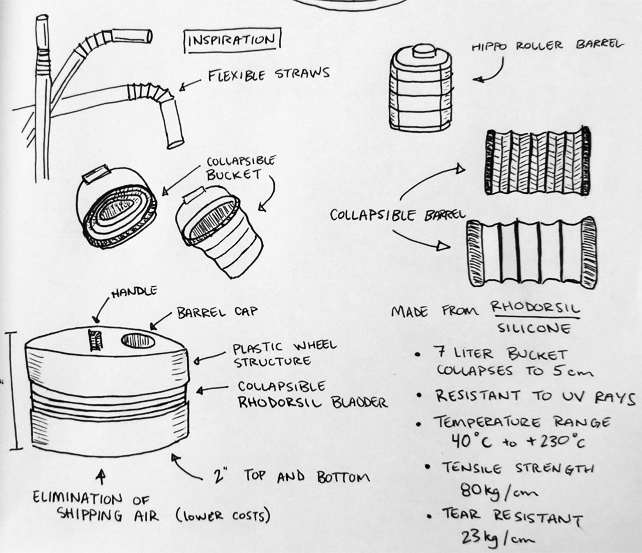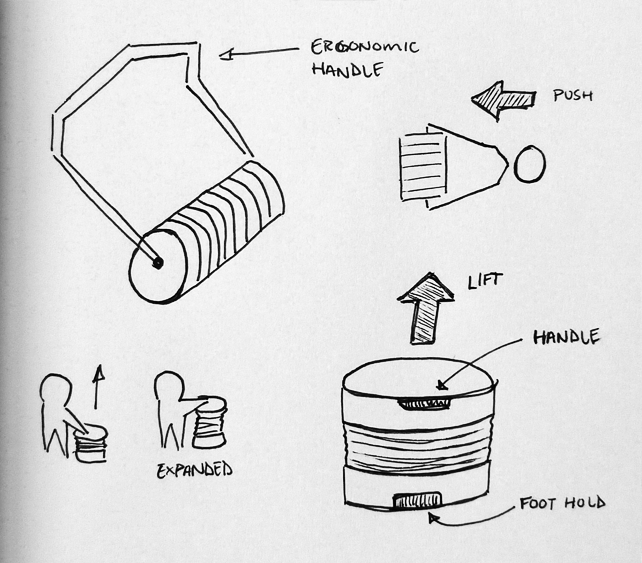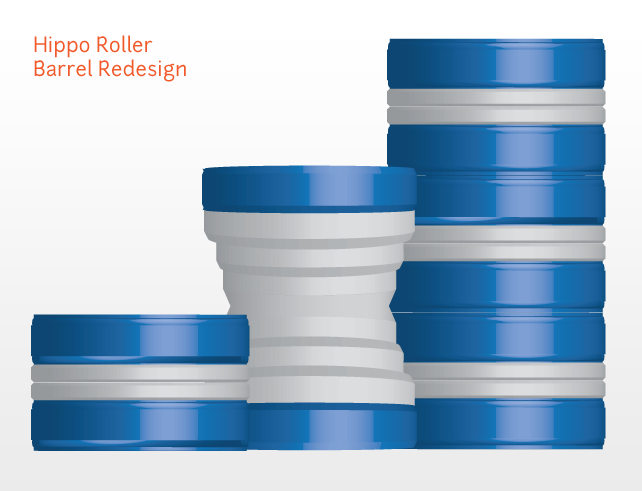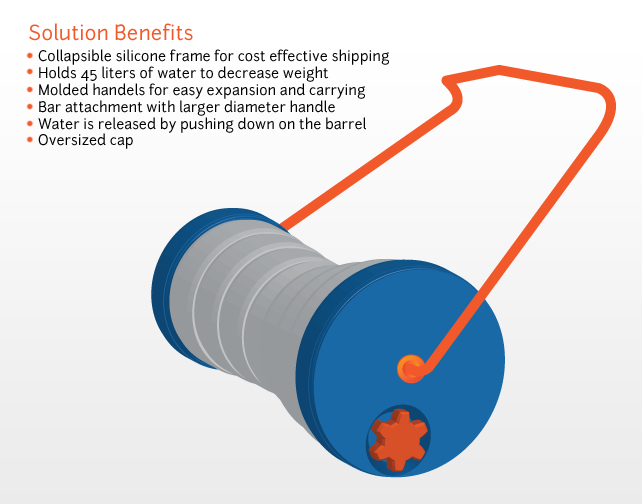Hippo Roller Redesign
Overview
Design a hand operated mechanical device for moving ≥ 40 liters of water per person per day from a distance of ≥ 0.5 km for a community of 12,000 households located in 21 disperse locations in Mpumalanga, South Africa.
Methods
- Research
- Ideation
- Sketching
Deliverables
Presentation Poster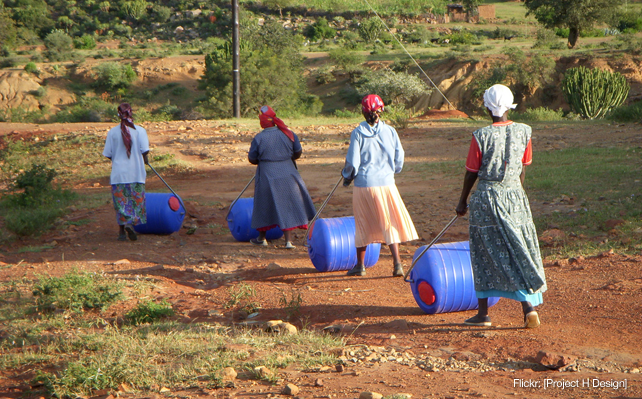
The Hippo Roller was designed almost 20 years ago by two South African men, and has radically improved the life of rural residents by allowing a person to "roll" 22 gallons of water in a plastic capsule from water source back to home.
Research
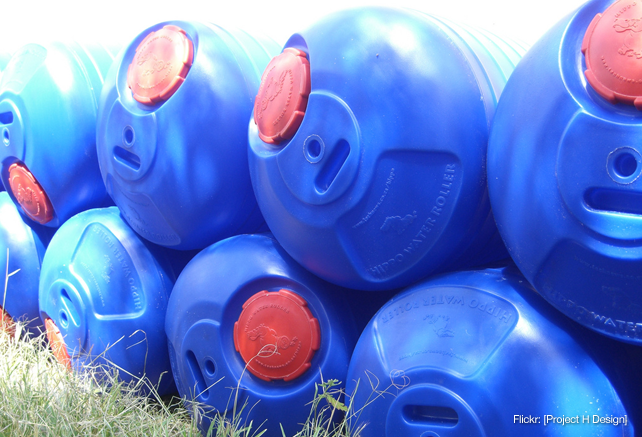
The Hippo Roller is currently manufactured in South Africa and due to NGO efforts, roughly 32,000 have been distributed worldwide, benefitting over 225,000 people.
Manufacturing inefficiencies and the cost of shipping the empty Hippo Roller drums outside of the country has limited the project's expansion and overall distribution to people in need.
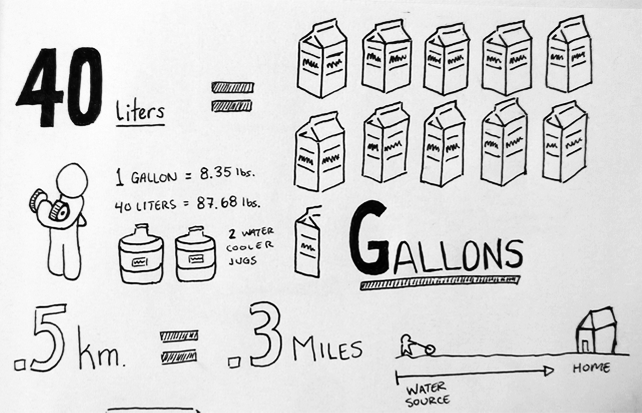
How much water is 40 liters?
40 liters is equal to about 10.5 gallons or two full water cooler jugs and can weigh almost 90lbs.
How far is 0.5km?
0.5km is equal to 0.3 miles or almost 1600 ft. This distance is equivalent to over 5 football fields.
Process
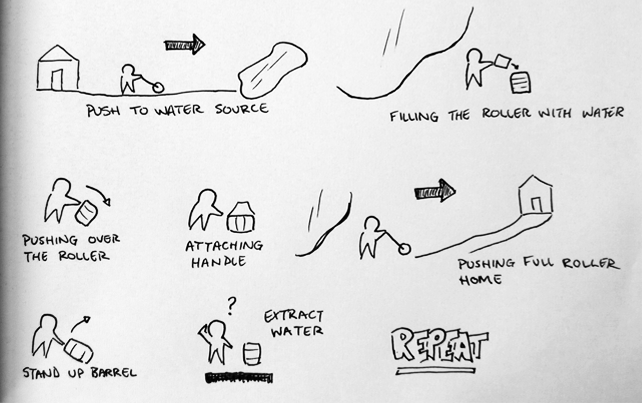
The current Hippo Roller does address the potential for musculoskeletal strain given the duration and frequency of its use.
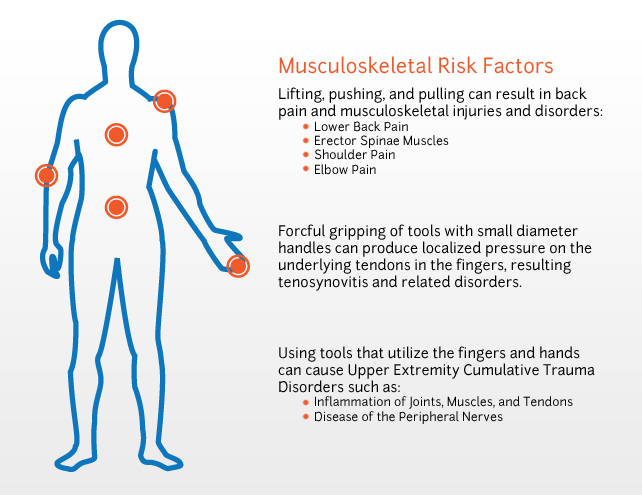
Ideation
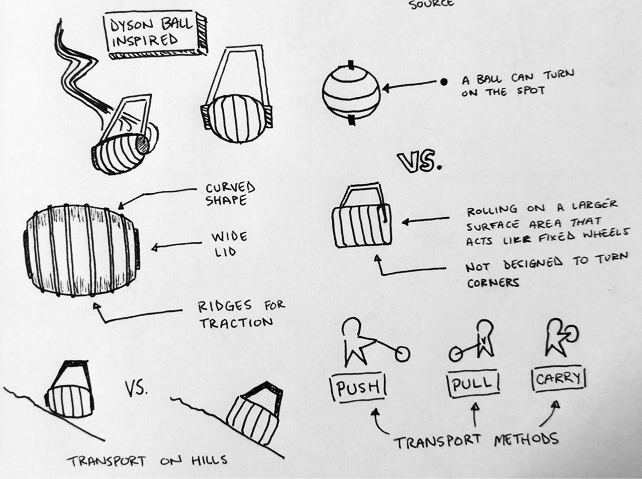
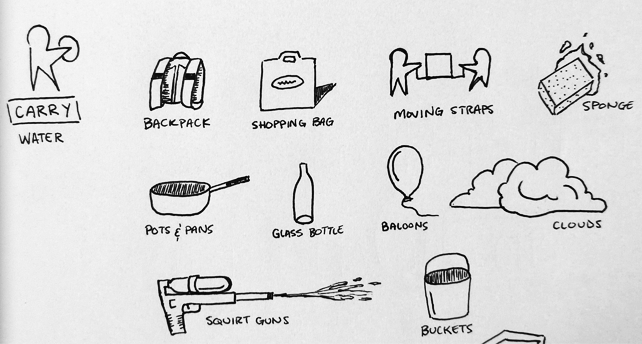
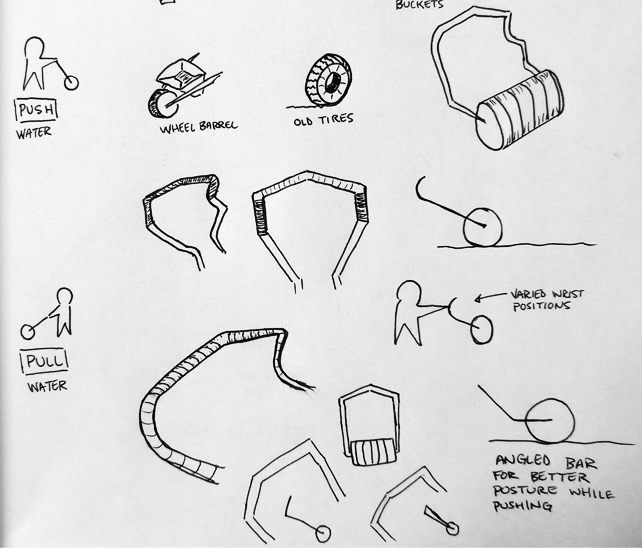
Water Collection Concepts
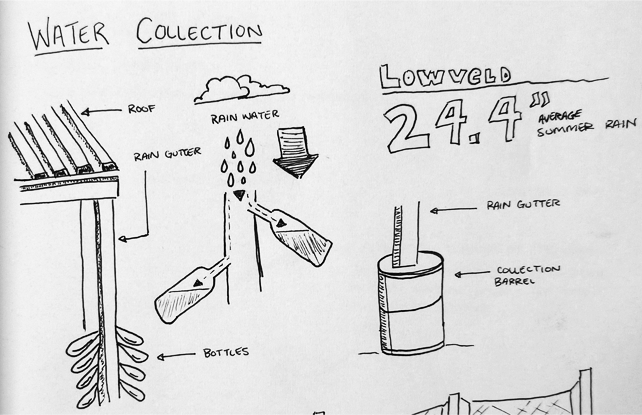
Rain water collection could be used to capture water from the rooftops of homes within the villages. Down-spouts would have containers attached to catch water before it reaches the ground. This concept would not provide the lowveld region with enough water through out the year given the average rainfall in the area.
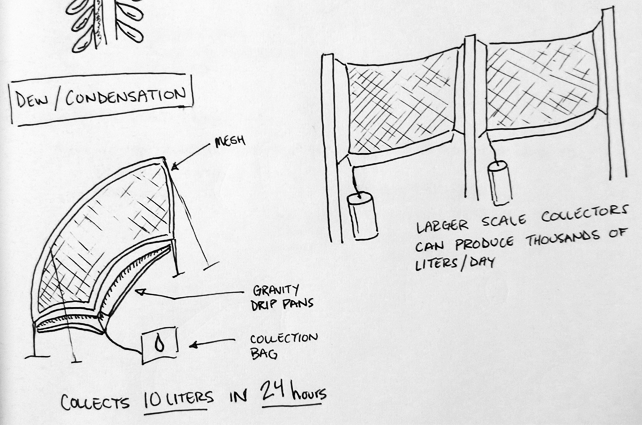
Fine mesh nets are able to catch dew and condensation from fog in the highlands areas. Gravity then forces the dew to drip down into a collection containers. Depending on conditions, these devices can collect thousands of liters of water daily. Small scale collectors can gather up to 10 liters in 24 hours. This water would then have to be transported to the lowveld to distribute to the settlers.
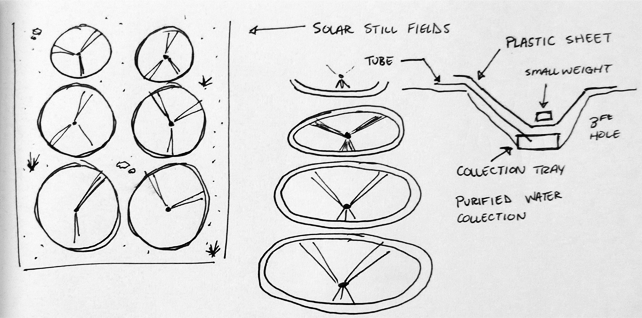
Solar still fields could be constructed as another method of water collection. Solar stills consist of digging a circular hole, three feet deep, and placing a collection tray at the base. A plastic sheet is then used to cover the hole and secured along the edges. A weight is placed in the center of the plastic sheet to give the sheet a convex shape. The gap between the ground and the plastic sheet creates condensation and the convex shape causes the condensation to drip into the collection tray.
Inspiration
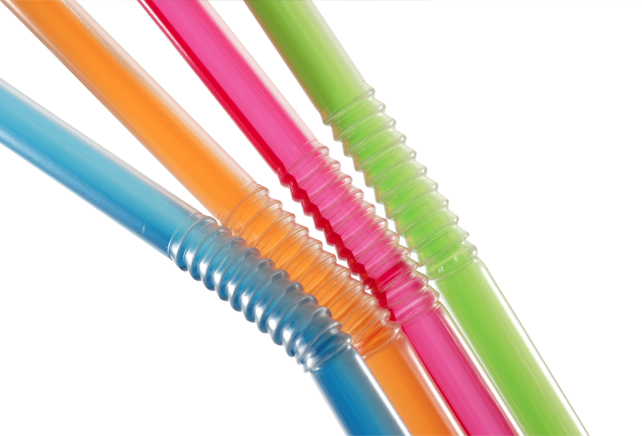
Flexible straws were the start of my concept inspiration. The neck of the straw expands and collapses as well as compensates for changes in position. The accordion style straw would allow the redesigned Hippo Roller to be compact while shipping but expand to hold large volumes of water for transportation.
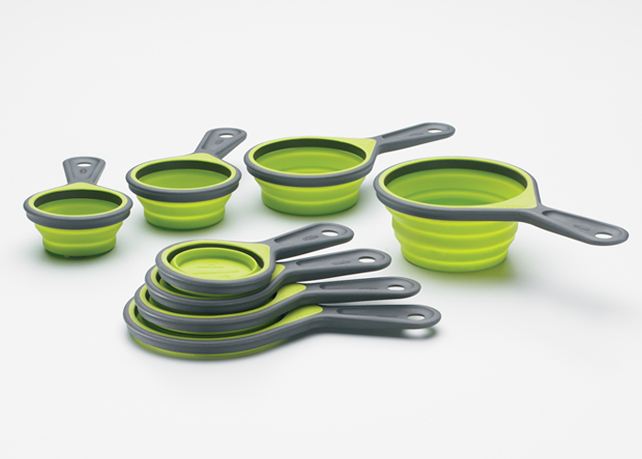
Recently, collapsible measuring cups have been created to save space in kitchen drawers and cabinets. A seven liter bucket is able to collapse to only 5cm in thickness. Many of these products are made from Rhodorsil Silicone, a product that is resistant to Ultra Violet rays, can resist temperatures between 40°C and 230°C, has a tensile strength of 80kg/cm and tear resistant up to 23 kg/cm.
Final Concept
